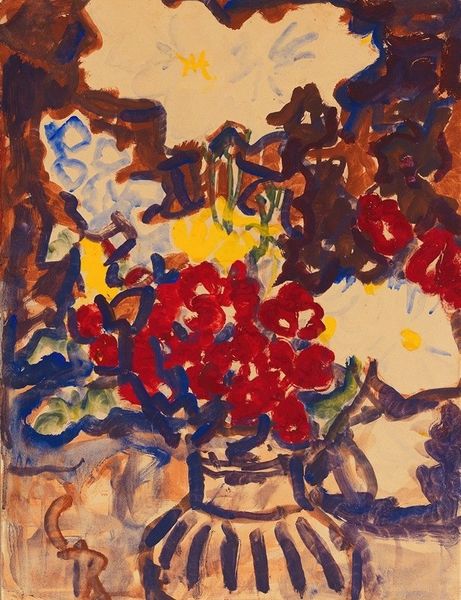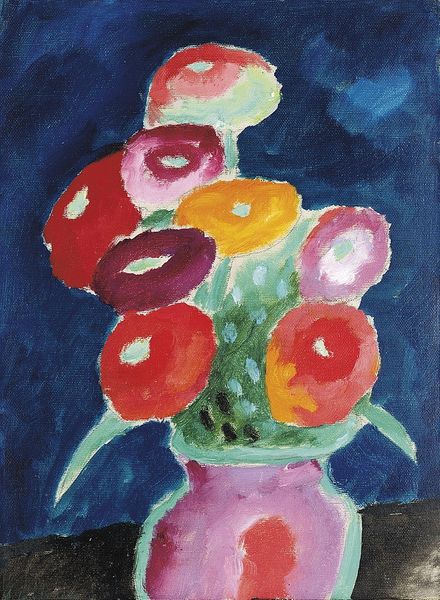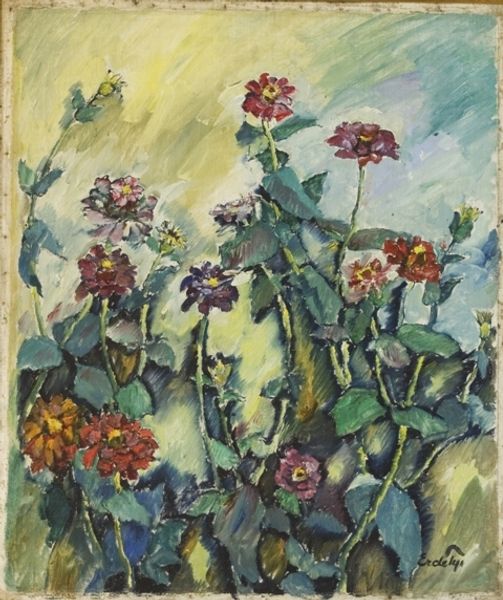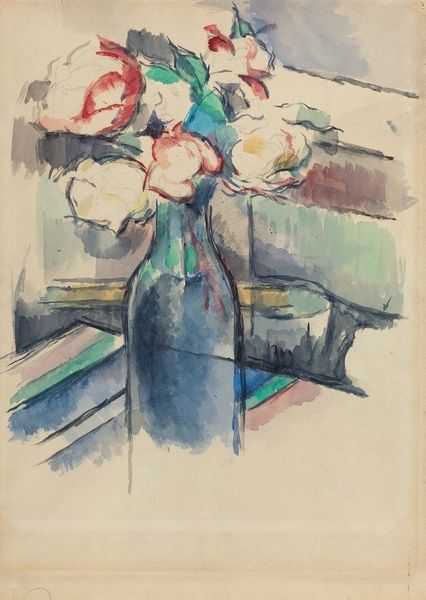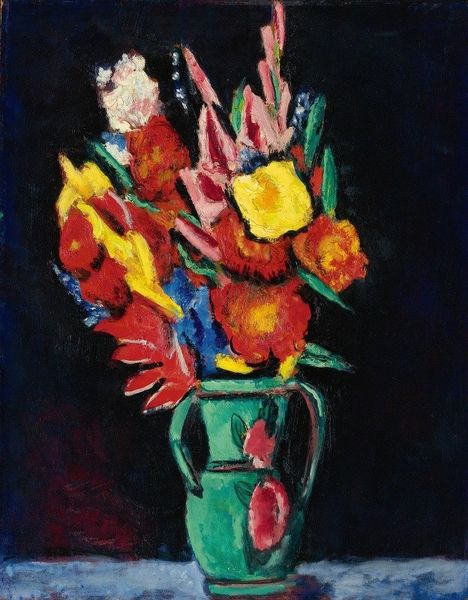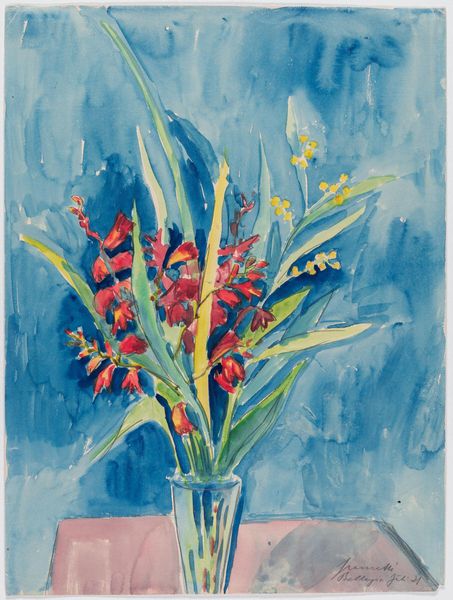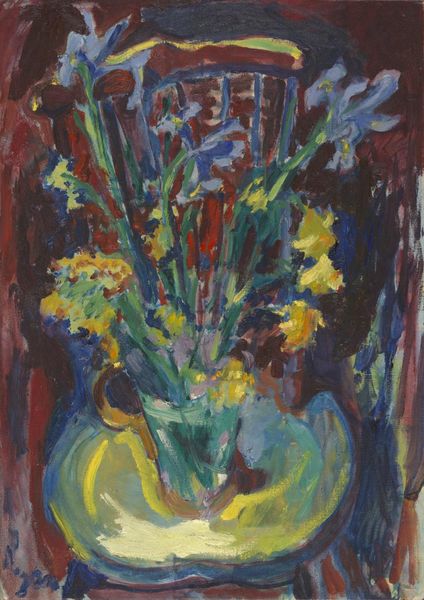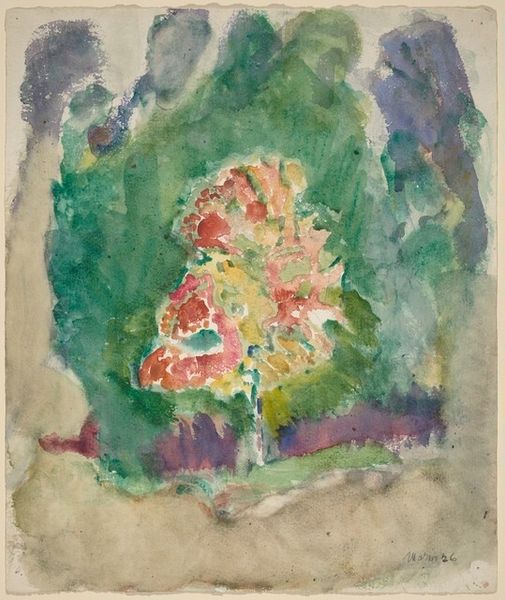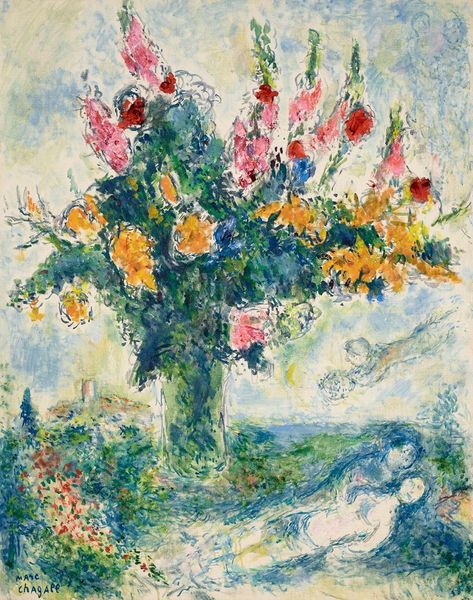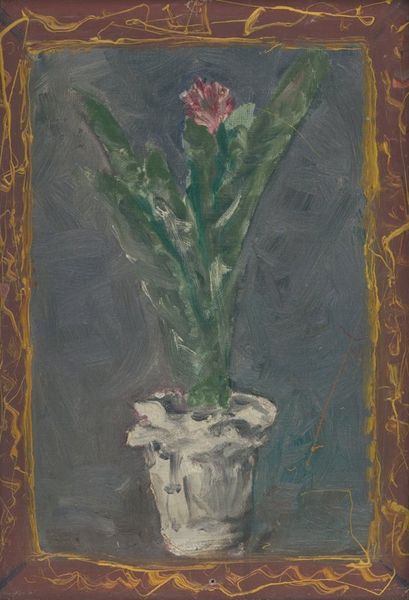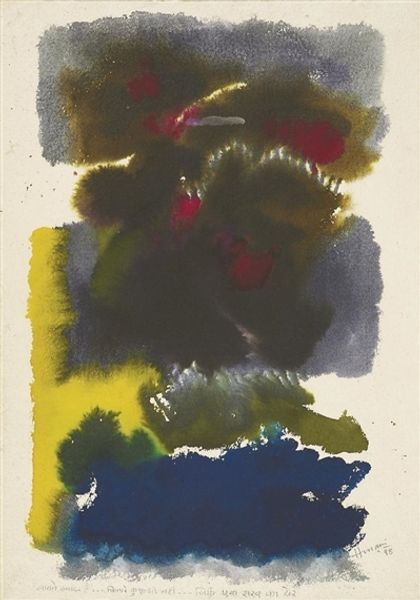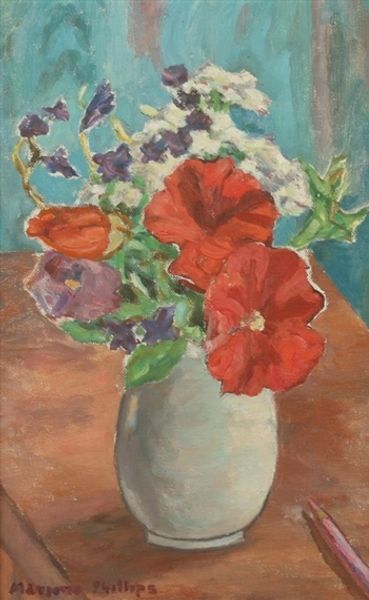
Copyright: Public domain US
Curator: Look at this striking yet humble still life by Émilie Charmy, "Flowers in a Vase," created around 1914. It appears to be executed in watercolor or a similar medium, a style leaning towards impressionism. What’s your initial read? Editor: It feels ephemeral. The brushstrokes are so loose, almost dissolving into the pale blue background. The whole composition gives off this dreamy, almost melancholic, impression. It feels very much of its time, just before everything changed with the first World War. Curator: That melancholic mood is interesting, especially when situated in the broader context of early 20th-century Paris. Charmy exhibited at the Salon d’Automne, joining a community of female artists seeking to create work within, but also often outside, the strictures of the male-dominated art world. Still life paintings, while traditionally regarded as lesser subjects, afforded women artists more access. Editor: Absolutely. There's this push and pull that resonates deeply here. Flowers, conventionally feminine, are depicted with a restless energy that seems to disrupt those associations. The rough handling of the medium rejects delicacy. Does it reflect the social restraints placed upon women in that period, who were expected to create only gentle artworks of still life or the home? The energy is palpable. Curator: It’s difficult not to consider these dynamics, when so many art histories often center male perspectives, obscuring contributions like Charmy's. Here the vase itself, usually a stable element, tilts slightly as though struggling to contain its floral burst. Editor: Exactly. What appears to be a commonplace subject becomes fraught with symbolic weight. The very act of displaying flowers – of cutting and confining them – might symbolize contemporary patriarchal structures. And those strokes of red mixed into the sky hint at a rising unease, the growing war and social upheaval perhaps? Curator: Perhaps. It offers such a powerful example of how even a simple still life can be charged with a complexity of emotion and ideas, especially when we situate it in its historical context and view it through a critical lens. Editor: Yes, that's a crucial insight. I see Charmy’s "Flowers in a Vase" no longer as a simple still life but as a profound reflection on gender, society, and impending change, conveyed with expressive grace and turbulent uncertainty.
Comments
No comments
Be the first to comment and join the conversation on the ultimate creative platform.
